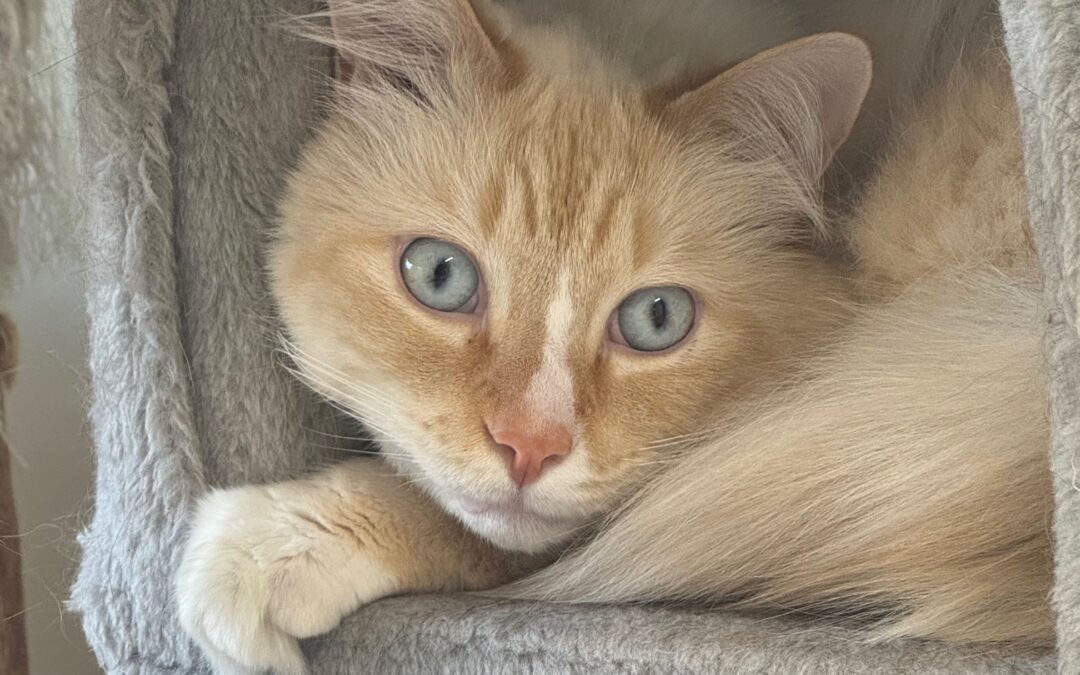
by The Ark Manager | May 2, 2025 | Dogs, Dogs Available for Adoption
Meet Lincoln
Lincoln is a spirited 2-year-old chihuahua mix with a big personality and a bit more to love—he weighs in at 25 pounds, making him larger than your typical chi. Energetic and playful, Lincoln loves long walks and thrives in an active home where he can get plenty of mental and physical stimulation.
He’s looking for a dog-savvy, adult-only household with no other dogs. So far he has done well with cats.
True to his breed, Lincoln can be vocal—he’s not shy about expressing himself, especially when he’s excited or uncertain. Lincoln is also working on his manners-he tends to jump up on people when he is excited, so continued training will help channel that energy in a more polite way. He’s also working through some separation anxiety, so a patient adopter willing to provide structure and continued training will be key to his success.
Lincoln would do best with someone familiar with chihuahuas and their larger-than-life personalities—someone who can offer consistency, affection, and the space he needs to decompress, settle in and thrive.
If you’re ready for a loyal, energetic companion who’s full of heart, Lincoln might just be your perfect match.
by The Ark Manager | Apr 26, 2025 | Cats, Cats Available for Adoption
Meet Clover – A Gentle Soul Looking for Her Safe Haven
Age: 12 years
Clover is a shy, sweet senior lady with a heart full of quiet love. At 12 years old, she’s an introvert through and through—she much prefers a calm, quiet home where she can take her time to settle in and just be herself. Loud noises and chaos aren’t her thing, but if you’re patient and gentle, Clover will reward you with soft purrs and warm snuggles.
Once she trusts you, she absolutely loves to be pet and will happily spend the day by your side, enjoying the stillness together. She’s not big on wet food (a bit picky, if we’re being honest), but give her some crunchy kibbles and she’s content.
Clover is looking for a peaceful forever home where she can relax, feel safe, and know she’s loved. If you’re the kind of person who values quiet company and soft companionship, Clover could be your perfect little shadow.




by The Ark Manager | Apr 24, 2025 | Cats, Successful Cat Adoptions
Meet Prince – A Gentle Soul with a Regal Look 👑🐾
Prince is a 3-year-old beauty with striking blue eyes and luxurious long blond fur. He comes from a big family of eight cats and is most at ease when surrounded by his feline siblings. While he may be shy around people at first, he’s a quiet and independent companion who enjoys observing the world from a cozy, safe spot.
Prince values his personal space but has a soft spot for squeeze-up treats — they just might be the secret to winning his trust. He’s best suited for a calm home, ideally with other cats, where he can settle in at his own pace and be appreciated for the gentle, reserved soul he is.
If you’re patient and have a quiet heart, Prince could be the perfect match for you. 🐱💙




by The Ark Manager | Apr 23, 2025 | Dogs, Dogs Available for Adoption
Anastasia—Ana for short—is a stunning 2-year-old Shepherd mix with a gentle soul and a playful spirit. She came to us as a stray, so it’s no surprise she’s still a bit unsure about shelter life. But despite all the recent changes, Ana has proven to be incredibly resilient, tidy, and perfectly housetrained.
She absolutely loves going for walks and is always ready for a game of frisbee—she’s got the energy and enthusiasm of a true athlete! Like many Shepherds, she can get a little mouthy when she’s excited, so she’s looking for a home that can help her channel that energy in positive ways. Because of her size and playful nature, Ana would do best in a home without young children.
Ana is hoping for a calm, patient environment where she can fully decompress and feel secure. She’d thrive as the only pet in the household, where she can have all the love and attention she deserves.
If you’re looking for a smart, active companion who’s ready to learn, bond, and blossom—Ana just might be your girl.





by The Ark Manager | Apr 19, 2025 | Dogs, Dogs Available for Adoption
Eddie is a happy-go-lucky 3-year-old bully mix who lives for life’s simple pleasures—long walks, sniffing, and lounging in his own cozy spot. Athletic and strong, he enjoys stretching his legs outdoors but is just as content relaxing solo with a frozen Kong or a sturdy chew toy.
Eddie is a tidy gentleman who keeps his space clean and is very respectful of his home here at the shelter. He greets everyone with a big, joyful smile and is always up for meeting new people, going on an adventure—or curling up on the couch for some chill time.
He’s made wonderful progress with his leash skills and absolutely loves his daily walks. Eddie thrives in a calm, low-key environment where he can enjoy his own space. Because of his size and playful energy, he’d do best in a home without young children.
Eddie has done well with both dogs and cats, and he could live with other animals—especially if he has a quiet area to retreat to when he needs a break.
If you’re looking for a loyal, goofy, and loving companion who enjoys the great outdoors and quiet moments alike, Eddie might just be your perfect match!
























